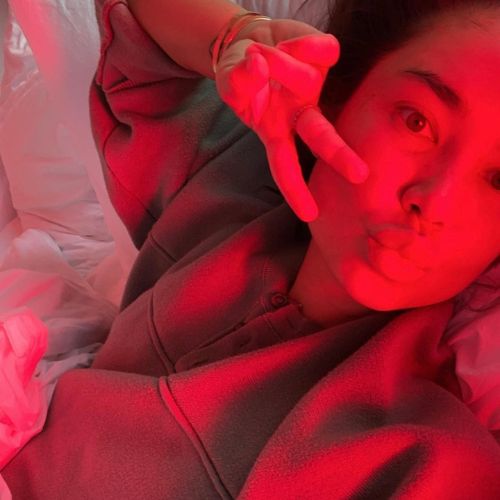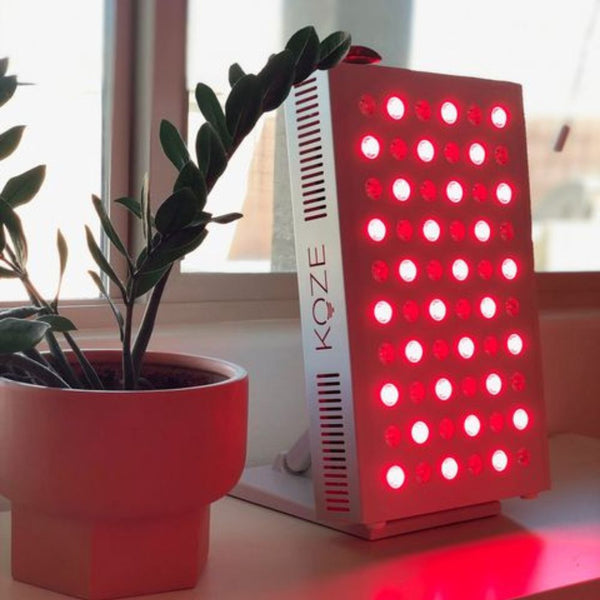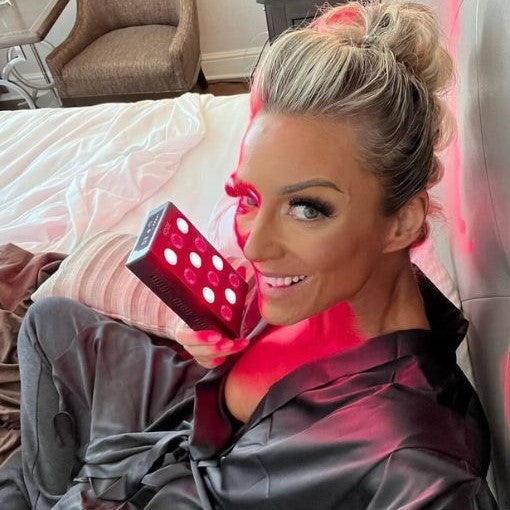
Managing Depression with Red Light Therapy
Managing Depression with Red Light Therapy
Depression affects millions of people worldwide, causing feelings of sadness, lack of energy, and difficulty finding joy in daily life. Many people struggle to find relief with traditional treatments like medications and therapy. This is where Red Light Therapy (RLT) comes in.
Once used mainly for skin health, RLT is now being explored as a tool for improving mood and managing symptoms of depression. This non-invasive therapy offers an exciting, natural way to complement existing treatments.
Benefits of Red Light Therapy for Depression
Using RLT for managing seasonal depression comes with several potential benefits, especially when used alongside traditional treatments. Here are some of the main advantages:
-
Non-Invasive and Safe: Unlike medications that can have side effects, red light therapy is non-invasive and considered safe when used correctly.
-
Improves Sleep Quality: Many people with depression experience sleep problems. Red light therapy can help regulate circadian rhythm and sleep by promoting melatonin production, leading to more restful nights.
-
Enhances Mood: By boosting serotonin and regulating stress hormones, red light therapy may help individuals feel more balanced and less overwhelmed by depressive symptoms.
-
Supports Brain Health: Research suggests that red light therapy could protect the brain by reducing inflammation and increasing oxygen flow, both of which are crucial for mental health.
-
Complementary to Other Treatments: Red light therapy can be used alongside medication, therapy, or lifestyle changes, offering a well-rounded approach to managing depression.
Understanding Depression
What is Depression?

Depression is a mental health disorder that goes beyond feeling sad or down for a few days. It can affect how you feel, think, and handle everyday activities. It may last for weeks, months, or even years, significantly lowering your quality of life.
Symptoms of Depression
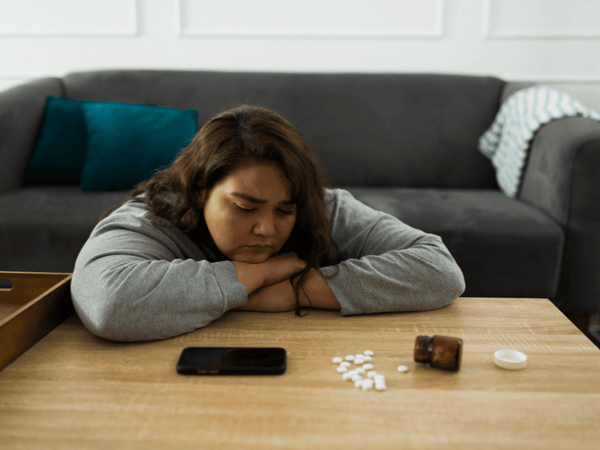
Common symptoms of depression include:
- Persistent sadness or hopelessness
- Lack of interest in activities
- Fatigue or low energy
- Trouble sleeping or oversleeping
- Difficulty concentrating
- Changes in appetite or weight
- Physical symptoms like headaches or aches
- Thoughts of suicide
These symptoms can vary from person to person, but they all interfere with daily life and can be overwhelming.
Causes of Depression
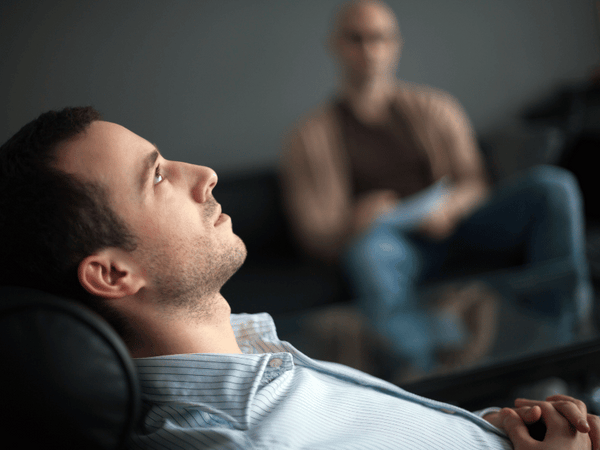
Depression can be caused by a mix of factors, such as:
- Genetics: A family history of depression increases your risk.
- Brain chemistry: Chemical imbalances in the brain.
- Life events: Stressful situations like the loss of a loved one or financial troubles.
- Medical conditions: Chronic illness or hormonal changes can also trigger depression.
Understanding what may cause or trigger your depression is key to finding the right treatments that work for you, including exploring alternative usage of lux options. (e.g. use a light therapy from light box.)
Types of Depression
There are several types of depression, each with its own unique symptoms and causes. Here are the most common types:
Major Depressive Disorder (MDD)

Also known as clinical depression, this is characterized by persistent sadness, lack of interest in activities, and other symptoms lasting at least two weeks. It can affect sleep, appetite, and overall energy levels.
Persistent Depressive Disorder (PDD):

Also called dysthymia, PDD involves long-term, less severe symptoms that last for at least two years. While it may not be as intense as MDD, it can still significantly impact daily life and mood over time.
Bipolar Disorder:

Previously known as manic depression, this disorder includes extreme mood swings between emotional highs (mania) and lows (depression). During depressive episodes, symptoms are similar to those of major depression.
Seasonal Affective Disorder (SAD):

SAD occurs in relation to changes in seasons, typically during the fall and winter months when there is less natural bright light. Symptoms include low energy, mood changes, and a lack of motivation, often improving with the arrival of spring.
Postpartum Depression:

This type of depression affects some women after childbirth. It involves feelings of sadness, anxiety, and exhaustion that can interfere with a new mother’s ability to care for herself or her baby.
Psychotic Depression:

People with psychotic depression experience severe depression alongside psychosis, which includes delusions or hallucinations. This condition is often treated with a combination of antidepressants and antipsychotic medications.
Premenstrual Dysphoric Disorder (PMDD):

A severe form of premenstrual syndrome (PMS), PMDD causes extreme mood swings, irritability, and depression in the days leading up to menstruation.
Situational Depression:

Also known as adjustment disorder, this type of depression occurs as a reaction to a specific life event, such as losing a job, experiencing a breakup, or dealing with financial difficulties. It’s typically short-term but can be intense.
Atypical Depression:

A subtype of major depression or persistent depressive disorder, atypical depression features symptoms like temporary mood improvement in response to positive events, along with weight gain, increased appetite, excessive sleep, and sensitivity to rejection.
How Red Light Therapy Works
Red Light Therapy (RLT) is a non-invasive treatment that uses low-level wavelengths of red light to penetrate the skin. Unlike ultraviolet (UV) light, which can be harmful in high doses, red light is safe and works by stimulating cells to produce energy more efficiently. This can help repair tissue, reduce inflammation, and, as recent research suggests, improve mood and mental health.
Here’s a simple breakdown of how RLT works:
- Increased Cellular Energy: Red light boosts the production of adenosine triphosphate (ATP), which is the energy source for cells. This helps the brain and body function more effectively.
- Reduced Inflammation: Inflammation is linked to both physical and mental health issues, including depression. Red light therapy can help lower inflammation in the body, which may positively impact mood.
- Better Blood Flow: Red light helps improve blood circulation, which can enhance oxygen and nutrient delivery to brain cells, potentially improving mental clarity and emotional well-being.
The Role of Red Light Therapy in Managing Depression
RLT is gaining attention for its potential benefits in mental health care, particularly in managing depression. Researchers believe that red light therapy can positively affect the brain by:
-
Regulating Sleep-Wake Cycles: Depression is often linked to disrupted sleep. RLT helps regulate melatonin, the hormone that controls sleep, which can result in better sleep patterns and improved mood.
-
Boosting Mood: Some studies suggest that RLT may help increase the levels of serotonin, the "feel-good" hormone, leading to better overall mood and reduced symptoms of depression.
-
Reducing Stress: Red light therapy has been shown to help lower levels of cortisol, the body’s stress hormone, which plays a significant role in anxiety and depression.
Scientific Evidence Supporting Red Light Therapy for Depression
While research on Red Light Therapy (RLT) for depression is still growing, early studies show promising results:
-
Seasonal Affective Disorder (SAD): A study found that red light therapy helped improve mood and reduce symptoms in people with SAD, a form of depression triggered by seasonal changes.
-
Mood Improvement: Research shows that RLT for treatment of depression may boost serotonin levels, which can help lift mood disorder and reduce depressive feelings.
-
Better Sleep: Studies highlight how RLT treat depression and helps improve sleep, which is crucial for managing depression, especially for those with disrupted sleep patterns.
How to Use Red Light Therapy for Managing Depression
If you’re interested in trying Red Light Therapy (RLT) for managing depression, here are some simple steps to follow:
-
Choose the Right Device: There are many RLT devices available, including light panels, handheld devices, and wearable options. Make sure to choose a device that’s designed for mental health benefits, with wavelengths between 600-900 nm.
-
Set a Schedule: Regular sessions are key. Start with short sessions, around 10-20 minutes per day, and gradually increase the time based on how you feel. Many people find morning sessions help regulate mood throughout the day.
-
Stay Consistent: Just like any treatment, consistency is important. Use RLT daily or several times a week to see the best results.
-
Combine with Other Treatments: RLT works best as part of a holistic approach to managing depression. Pair it with other treatments like therapy, exercise, or meditation.
Conclusion
Depression and anxiety are a complex and multifaceted mental health condition, with various types ranging from Major Depressive Disorder (MDD) to Seasonal Affective Disorder (SAD) and Bipolar Disorder. Each type presents its own challenges, but there are multiple treatment options available, including medications, therapy, lifestyle changes, and emerging therapies like Red Light Therapy (RLT).
While traditional treatments remain essential, exploring complementary therapies like RLT may provide additional support for managing depression. Whether it's improving sleep, boosting mood, or reducing stress, RLT offers a non-invasive and promising solution to those struggling with depressive symptoms.
Ultimately, managing depression often requires a personalized approach, so it's important to work with healthcare providers to find the best treatment plan that suits individual needs.
